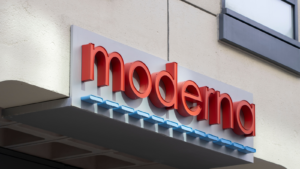
From its stellar performance in 2021 to deflating in 2022, the biotech sector continued its stagnation into 2023, highlighting some pharma stocks to avoid. Year-to-date, the S&P Biotechnology Select Industry Index has dropped by 4%.
Likewise, the number of biotech firms shrunk by 3% in 2023. Although overlapping with the biotech sector, pharma stocks have started to recover, largely due to new obesity drugs. For example, year-to-date, the VanEck Pharmaceutical ETF (NASDAQ:PPH) has returned 7.69% to the fund’s shareholders.
However, due to the inherent risk involved in these sectors, their access to debt financing is more restricted compared to tech stocks. This is demonstrated by the 56% shrinkage of mega deals in the pharma sector since 2021, per analyst data. This has left many smaller pharma/biotech companies relying on their pipelines and existing cash reserves.
Now, let’s take a look at some specific pharma stocks to avoid based on recent performance trends and market challenges.
Intellia Therapeutics (NTLA)

Intellia Therapeutics (NASDAQ:NTLA) is yet to generate profits as a clinical-stage firm. It focuses on developing NTLA-2001 and NTLA-2002, one for transthyretin amyloidosis and the other for hereditary angioedema.
The company is taking advantage of CRISPR-Cas9 genome editing to address them. But regardless of the success of these pipelines, they are both rare disorders, certainly compared to cancer and obesity.
On April 29, Intellia released its 2023 annual report, having “incurred net losses in each period” since its inception. For the full year 2023, the accumulated deficit was $1.6 billion. Compared to $582.9 million in net cash in 2022, Intellia concluded 2023 with $130.3 million in cash.
Year-to-date, NTLA shares have lost nearly 27% of their value. At the present price level of $21.98, the stock is just 11.9% above its 52-week low point of $19.37 per share.
Exelixis (EXEL)

Focused on cancer treatments, Exelixis’s (NASDAQ:EXEL) flagship drug is Cabometyx for the treatment of advanced renal (kidney) cell carcinoma and hepatocellular (liver) carcinoma.
For the full-year 2023, Cabometyx was responsible for $1.6 billion in revenue, rising steadily from $1 billion in 2021. The company turned $207.8 million in net income, or 65 cents per share (diluted), compared to $182.3 million in 2022.
However, the company’s total liabilities increased from $583 million in 2022 to $678.4 million in 2023. Its accumulated deficit also increased from $34.2 million to $173.3 million for the same period.
Looking at the broader picture, Pfizer’s (NYSE:PFE) $43 billion acquisition of Seagen for cancer treatments is likely to make Exelixis’ bottom line shallower.
So far, the success of Cabometyx has kept somewhat positive market sentiment, flatlining EXEL shares at -0.67% YTD performance. At the present price level of $23.74, the EXEL stock is 22% above the 52-week low point of $18.52 per share.
Moderna (MRNA)

Wedded to its ticker symbol branding, Moderna (NASDAQ:MRNA) went public at the end of 2018. Two short years later, the company participated in novel mRNA vaccine rollouts, comprising the bulk of Moderna’s revenue.
But not only did that demand flatten, a host of issues popped up with the mRNA delivery technology itself, related to lipid nanoparticle (LNP) formulation. These range from potential toxicity to cause autoimmune disorders and cardiovascular issues to unintended protein production.
Regardless of long-term studies and course correction, both mRNA and MRNA branding have been tainted. For full-year 2023, Moderna reported a $4.7 billion net loss vs net income of $8.4 billion in 2022. This underscores why Moderna is often mentioned among pharma stocks to avoid.
Although Moderna’s total liabilities decreased from $6.7 billion in 2022 to $4.57 billion in 2023, the fundamental trajectory looks like a train wreck in slow motion.
From the present price level of $111.62, MRNA stock is 44% above its 52-week low of $62.55 per share. With a positive YTD performance of 11.75%, this points to a solid exit point for investors.
On the date of publication, Shane Neagle did not hold (either directly or indirectly) any positions in the securities mentioned in this article. The opinions expressed in this article are those of the writer, subject to the InvestorPlace.com Publishing Guidelines.




